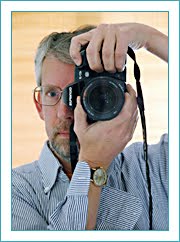I recently traveled to Japan and back. I distracted myself from the inconveniences of flying economy class (almost eleven hours there and just over nine hours back) with some reading, as people do, but I'm a moderately nervous flyer, so I find it impossible to read while flying unless the book is either a collection of shortish essays that allow me to read in bursts or it's light, very brisk reading. I took Frank Abagnale's Catch Me if You Can: The True Story of a Real Fake with me (Broadway Books, 2000; I picked up a used copy in a thrift store a few years ago thinking it might be interesting to see how the movie version departs from reality) and, ahead of my flight home, I picked up a copy of Malcolm Gladwell's The Bomber Mafia: A Tale of Innovation and Obsession (Penguin Books, 2022) at a bookstore in Haneda Airport. I read the entirety of Catch Me if You Can on the way to Tokyo and most of The Bomber Mafia in the air on the way home. They were both good, fast-paced choices, Catch Me if You Can in particular because, if you've seen the movie, most of the story is already familiar.Some incidents in the movie Catch Me if You Can have always seemed implausible to me. It turns out that, although clearly details have been altered and certain incidents added or exaggerated (or underplayed; the book suggests the real Abagnale spent a lot more of his time pursuing women than the character in the film does), most of it is true in a broad sense. I noted two major differences, though. I have always thought Abagnale's apprehension in the film especially problematic. It makes no sense. It's hard to believe anyone could have established or acquired and operated a large-scale printing shop in the middle of a tiny town in France without anyone noticing as the DiCaprio character appears to do in the film. In reality, the nearly perfect, essentially real (although forged) checks Abagnale was using at the end of his career as a bad check passer were innocently made by the gullible father of an Abagnale girlfriend who, very conveniently, owned a printing company (he was told they were being made as samples).
The other main difference – and it is a striking difference – between reality and the movie is in the punishment the real Abagnale received at the hands of the French government after his arrest. He endured shockingly cruel treatment in prison (barely fed, in solitary confinement without light, sleeping in his own excrement for months on end) and the book devotes a great deal more time to describing his stint in prison and how he was eventually released than the film version does. Worth a read.
The Bomber Mafia was the name given to a group of US military men who before and into WWII (comparatively early in the history of aviation), believed, before any proof was available, that precision bombing alone would someday be the way wars were won and, by avoiding high casualties both among soldiers fighting on the ground and among civilians, won more quickly and more ethically. Led by Major General Haywood S. Hansell, they put their faith in the Norden bombsight, which, in theory (in perfect conditions – conditions that almost never prevailed), allowed dropping a bomb in a precise location from tens of thousands of feet in the air. The bombsight, despite its promise and the resources that went into its production and protection (its development was top secret and units in use were to be destroyed to prevent capture), had a very bad record in actual use. Eventually, the opposing view, championed by Curtis Le May – that indiscriminate "area bombing" (and eventually indiscriminate firebombing using napalm canisters) was more effective – prevailed, ultimately resulting in the March 1945 firebombing of Tokyo (and then cities all over Japan), which in the space of a few hours killed more people than either of the atomic bombs dropped on Japan later in the same year (comparing the immediate deaths anyway; the lingering effects of the atomic detonations eventually killed more people).
The details are mostly recorded history. What makes this book of interest is its focus on the way members of the Bomber Mafia, who, despite huge losses suffered by bomber crews using the bombsight and repeated failures to hit targets with enough bombs to make the sacrifices worthwhile, refused to accept failure and repeatedly doubled down on the idea of precision bombing, placing blame for unacceptable results elsewhere. The book is more an examination of social psychology than a war tale and its look at how people get attached to questionable ideas and stubbornly defend them despite contrary evidence seems particularly relevant at the moment. The irony is that toward the end of the war, precision bombing became increasingly possible and, today, with drones and computer-guided munitions, it really is possible to "drop a bomb into a pickle barrel from 30,000 feet" as those championing the Norden bombsight claimed. Whether precision bombing, in practice, was truly more ethical than carpet bombing continues to be debated. Le May argued that anything that shortened the war ultimately meant fewer deaths than would have occurred if carpet bombing with incendiary bombs (and atomic bombs in Japan) hadn't been used. Hansell and the Bomber Mafia were appalled by indiscriminate bombing of civilian populations. This book asks you to decide whose side you would have been on. Another book worth reading.












